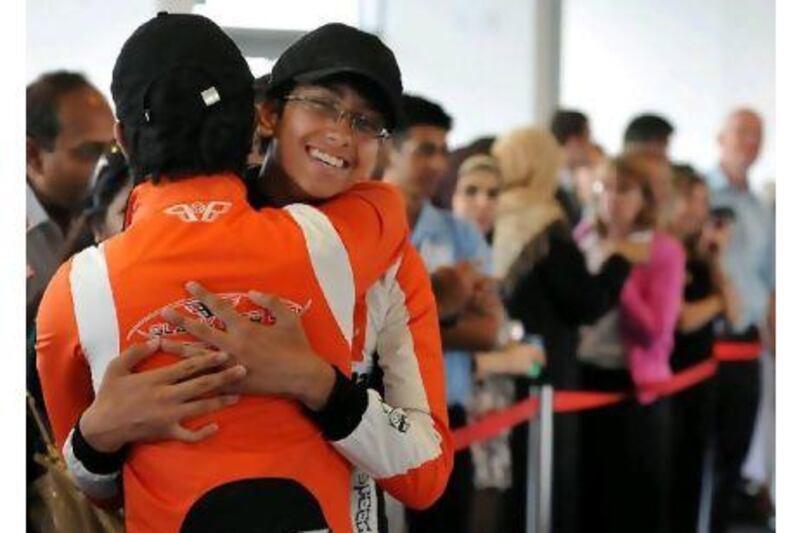ABU DHABI // This Formula One car may lack the horsepower, speed and size of the real thing but the miniature model still proved to be a winner on the track.
The gas-powered balsa wood F1 car sped down a 20-metre straight course yesterday to claim first place in the national finals of the F1 in Schools competition.
The model was designed and raced by Team Red Shift, who won the national finals last year. They will head to Malaysia in September to represent the UAE in the world championship.
Dominic Palubiski, 17, and his five teammates from Dubai College beat 10 other teams to win the competition at Yas Marina Circuit. Revolution Racing, also from Dubai College, finished second.
Pupils between nine and 19 were challenged to develop their own F1 team. As well as design and build their car, they also had to make a presentation to a panel of judges.
Dominic's teammates - Mustafa Shaikh, 16, Louisa Henson, 17, Gina Steel, 17, Rahul Dungarwal, 17, and Shounak Das, 17 - all had individual roles including branding and finance. They will need to raise Dh100,000 in sponsorship money to help them get to Malaysia.
Louisa said Team Red Shift had already raised Dh14,000 to reach the national finals. "We will have to meet with sponsors and sell our team," she said.
During the next months, Team Red Shift will be e-mailing, phoning and meeting with banks, airlines and anyone else who might sponsor them.
Richard Cregan, the chief executive of Yas Marina Circuit, who was Toyota's F1 team principal, said the competition was as close as children could get to the sport.
"If you see what effort these kids put into building these cars and working on their reaction times, this is very close to racing and competing. It's as close as they will get to F1 without the real thing," he said.
Mr Cregan said the children were at a better advantage now than most Formula One drivers.
"They can very often be more open to learning in this kind of situation than an F1 driver. They might have quicker reaction times than F1 drivers and they don't have any mental block as to why they should be quick," he said.
Mr Cregan noted there had been a rise in the level of competition this year, considering it was only the second time the Circuit had hosted the event. In 2009, the competition was held at Dubai Autodrome.
"After the results and the quality of the competition last year, they will certainly be watching what's coming out of the UAE this year," he said.
Dominic said he was pleased with the performance of the team's car, but would spend the next few months working on strategy. "We will make it better," he said.
Work for the 2011 finals began last September for Revolution Racing, which will be paired with a Malaysian team in the finals. The trio - Vansh Dassani, 15, Kashyap Sajnani, 16, and Saniya Mediratta, 16 - experienced a steep learning curve. "Some products didn't deliver on time," said Saniya. "Our wheels were three times their original weight and the day before the competition we had to go back to the manufacturer to get them made again."
They also had to paint their own car, which is usually a specialist job. Weight is important and a car needs the right number of paint layers.
"The company that was going to paint it said it would take five days. Because the car was delivered late, we couldn't wait to do this," Saniya said.
Revolution Racing are looking forward to working with their Malaysian counterparts. "We had the fastest car, and they might have the best pit display," Kashyap said.






